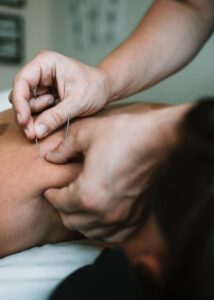
Muscular pain can be a real pain! Whether it be the result of stress, injury, or a chronic condition, it can be debilitating and negatively affect the quality of life. Fortunately, there are several treatments available for pain relief, and dry needling is one such treatment that is becoming increasingly popular. It may seem intimidating at first thought, but it is actually quite simple and effective. In this blog post, we’ll explore dry needling for muscular pain treatment and everything you need to know before taking the plunge.
1. What Is Dry Needling?
Dry needling is a therapy technique that involves the use of thin, sterile needles inserted into trigger points or knots in muscles to alleviate pain and improve function. The procedure is typically administered by a trained physical therapist, chiropractor, or acupuncturist and involves using a dry needle, meaning there is no medication or fluid passing through the needle. Instead, the needle is used to stimulate and release the tightness in the muscle, improving blood flow and reducing inflammation.
2. How Does Dry Needling Work?
Dry needling is based on the scientific theory that pain is caused by trigger points or knots in muscles, which can be relieved by the release of tension. By inserting the thin needle just beneath the skin surface and into the trigger point, the muscle undergoes a twitch response, which provides relief and improves the function of the muscle. The twitch response also leads to the release of endorphins in the body, which are natural painkillers. As a result, dry needling provides quick muscle pain relief.
3. Is Dry Needling Safe?
Dry needling is a safe and minimally invasive treatment option for muscular pain relief. The needles used are very thin and inserted into the skin gently, reducing the risk of injury or damage. However, as with any medical procedure, there are some risks involved, such as infection or bruising. So, it’s essential to ensure that the practitioner performing the procedure is qualified and licensed.
4. What Conditions Can Dry Needling Treat?
Dry needling can be beneficial to a wide range of muscle-related conditions, including headaches, neck pain, back pain, shoulder pain, tennis elbow, hip pain, and plantar fasciitis, among others. It may also be helpful for sports injuries and postoperative recovery.
5. What to Expect During a Dry Needling Session?
Before starting dry needling, the practitioner will conduct a thorough evaluation to determine the trigger points in the muscle. A needle will be inserted into the trigger point and left for a duration ranging from a few seconds to several minutes, depending on the severity of the muscular tension. You may feel a slight prick or pinch, but it isn’t severe pain. After the procedure, the practitioner will apply cold or heat packs to reduce inflammation.
Dry needling for muscular pain treatment is becoming increasingly popular due to its effectiveness and minimally invasive nature. It works by using thin, sterile needles to stimulate trigger points in the muscle, which leads to quick pain relief and improved muscle function. Dry needling is safe, although some risks are involved. It can be beneficial for a range of conditions, including back pain, shoulder pain, and plantar fasciitis, among others. Before getting the procedure, ensure that the practitioner is qualified and licensed. If you’re suffering from muscle pain, consider trying dry needling as an alternative treatment option. It could be the solution you’ve been searching for!


Follow Us